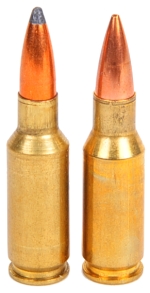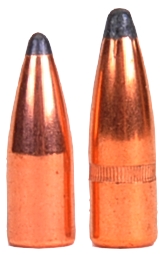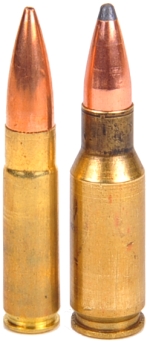I received an Echo as a gift about a year ago, but only recently got around to setting it up. At first, it was a source of debate and consternation, apparently between me and a cylindrical electronic device, but eventually we sorted out our differences. She became more accommodating and, in turn, I became more considerate. On a day when nothing seems to be going right, and there is a need to clear my head and get my diastolic blood pressure down below one hundred, I only have to say. “Echo, play Otis Redding” and I can dance with my wife to, “I’ve Been Loving You Too Long”, or sing along with “Dock in the Bay” or maybe just take a nap.
Monty Python’s Ministry of Silly Walks
 My theory is that if we remove the comments section from the Internet we would see a Renaissance of experimentation and innovation, as a little less consensus seeking could do wonders for the expression of original thought. The “Don’t judge me” generation has apparently become the “Judge everyone” generation, often with a misapplication of criteria and lack of understanding. Consequently, every new cartridge or firearm introduced is sucked into a maelstrom of public assessment and then spit out on the other side unless it replicates the 308 Winchester or 9mm Luger. (Echo, play The Shirelles).
My theory is that if we remove the comments section from the Internet we would see a Renaissance of experimentation and innovation, as a little less consensus seeking could do wonders for the expression of original thought. The “Don’t judge me” generation has apparently become the “Judge everyone” generation, often with a misapplication of criteria and lack of understanding. Consequently, every new cartridge or firearm introduced is sucked into a maelstrom of public assessment and then spit out on the other side unless it replicates the 308 Winchester or 9mm Luger. (Echo, play The Shirelles).
The rifle pictured left and described below is an example of a personal preference. It came about when I was working with an AR 15 chambered for the 30 Remington AR and wanted a more physically stable platform for handload development. The Zastava manufactured Model 799 had the right bolt face and extractor dimensions, it was easy to modify and it was in the shop at the onset of the project.
The Model 799 does not approach the quality of the CZ mini Mauser, certainly in bolt movement control or feed assurance or trigger system. Still, the Model 799 could contain 60,000 PSI and handle a sufficient level of bolt thrust and barrel/receiver hoop stress to accommodate my experiments… as long as they stopped short of being raised to the roof and struck by lightening to the protest of angry villagers.
|
Mini Mauser Custom |
|
| Company | Remington |
| Model Designation | Model 799 |
| Point of Manufacture | Zastava, Serbia |
| Type of Action | Bolt Action 2 Lug 90º Lift |
| Caliber | 30 Remington AR & 7mm-30RG |
| Magazine Capacity | 3+1 |
| Magazine Type | Hinged Floorplate |
| Barrel Length | 21″ |
| Rifling Twist Rate | 1:10″ 6 Groove |
| Barrel Type | Shilen Match CM |
| Barreled Action | Alloy Steel – Blued |
| Stock Type | Bell & Carlson Carbelite |
| Length of Pull | 14.0″ |
| Drop at comb | 5/8″ |
| Drop at heel | 1/2“ |
| Bottom Metal | Alloy Steel |
| Front Sight | N/A |
| Rear Sight | N/A |
| Scope Accommodation | Drilled & Tapped |
| Trigger Pull | 3 Lbs 4 Oz |
| Weight of Firearm | 5.5 Lbs |
| Overall Length | 40.25″ |
| Safety | 2 Position Slide |

Why would anyone bother to make such a contraption, modified rifle or cartridge selection? Because it is accurate, interesting, educational and, mostly, fun. The project provided the motivation to make the rifle and cartridge combo, but also to design a 7mm-30 RG wildcat version and associated tooling and it caused me to learn how to make reloading dies from threaded bar stock when funds were lacking to have a custom set made.
The mini Mauser has two barrels, one chambered for the 30 Remington AR (Far Right) and one chambered for the Real Guns 7mm-30 RG wildcat (Near right). The barrel swap takes about 5 minutes with the assistance of a barrel vise and abbreviated action wrench.
 The subject of this exemplum is the 30 Remington AR. While waiting for some material for another project to arrive, and while on a new gun review hiatus, there was time available to work up deer and hog hunting loads for this rifle. Most of the early development with was done with a max pressure of 65kpsi, compared to the SAAMI max pressure of 55kpsi; no sticking cases or blown primers or loud noises or flying shrapnel. Still I thought there might come a time when the rifle would be fired without a remote rest and solenoid actuated trigger. Subsequently, the two good hunting bullets were selected, loads were modified and maximum reduced to 60kpsi. Echo, play Bonnie Raitt.
The subject of this exemplum is the 30 Remington AR. While waiting for some material for another project to arrive, and while on a new gun review hiatus, there was time available to work up deer and hog hunting loads for this rifle. Most of the early development with was done with a max pressure of 65kpsi, compared to the SAAMI max pressure of 55kpsi; no sticking cases or blown primers or loud noises or flying shrapnel. Still I thought there might come a time when the rifle would be fired without a remote rest and solenoid actuated trigger. Subsequently, the two good hunting bullets were selected, loads were modified and maximum reduced to 60kpsi. Echo, play Bonnie Raitt.
Pictured left, a 130 grain Hornady soft point with enough jacket toughness for thin skinned medium size game and a Winchester 150 grain power point, certainly a good choice for deer, hogs and black bear. They are both flat based, which preserves net case powder capacity.

Assembly is usually straight forward, however, the seater plug did not have enough reach even with the lock ring removed with the seater die properly adjusted, so a plug was made from a 1/2″-20 bolt.
Once fired cases were used, but full length resized. The pick up over was still approx 2 1/2 grains of capacity from a SAAMI standard chamber, which helped with some of the compressed charges. (Echo, play Joss Stone).
Small rifle magnum primers were used previously, but I was concerned that their use with heavily compressed charges might be pushing bullets forward ahead of ignition causing erratic velocity results. Subsequently, small rifle bench rest primers were selected.
A tale of two types of bullets…
|
|||||||||||||||||||||||||||||||||||||||||||||||||||||||||||||||||||||||||||||||||||||||||||
|
|||||||||||||||||||||||||||||||||||||||||||||||||||||||||||||||||||||||||||||||||||||||||||
(Echo, play Bob Dylan, “Gotta Serve Somebody”)… Seems as though a good number of powder types were tried, the best appearing here. Win 748 was too slow to hit a maximum charge, CFE 223 produced maximum loads with velocity well below those posted. Re 10x was out performed by Re 7. So what did I get that my 30-30 WCF could not deliver? Good question.
Typical 30-30 Win 150 grain RN ammunition will deliver 2,150 fps when fired from a 20″ lever action rifle. Many are rated 200 fps faster, but this is predicated on the use of a 24″ test barrel. In comparison with the 21″ barrel 30 Remington AR, they look something like this:
|
30-30 WCF 150 Grain 193 Yard Point Blank Range |
|||||||
|
Yards |
0 |
50 |
100 |
150 |
200 |
250 |
300 |
|
Velocity – fps |
2150 |
1946 |
1754 |
1577 |
1418 |
1279 |
1166 |
|
Energy – ft.-lbs. |
1539 |
1261 |
1025 |
828 |
669 |
545 |
453 |
|
Momentum – lbs-sec |
1.43 |
1.29 |
1.16 |
1.05 |
0.94 |
0.85 |
0.77 |
|
Path – in. |
-1.5 |
1.9 |
3.0 |
1.2 |
-4.0 |
-13.6 |
-28.5 |
|
30 Remington AR 150 Grain 201 Point Blank Range |
|||||||
|
Yards |
0 |
50 |
100 |
150 |
200 |
250 |
300 |
|
Velocity – fps |
2760 |
2594 |
2435 |
2281 |
2133 |
1992 |
1856 |
|
Energy – ft.-lbs. |
2537 |
2241 |
1974 |
1733 |
1516 |
1321 |
1147 |
|
Momentum – lbs-sec |
1.83 |
1.72 |
1.62 |
1.51 |
1.42 |
1.32 |
1.23 |
|
Path – in. |
-1.5 |
0.6 |
1.5 |
0.9 |
-1.4 |
-5.6 |
-12.0 |
 Not a big jump in point blank range but really big velocity and kinetic energy differences from muzzle out through 300 yards. Trajectory really flattens out with the 30 Remington AR. What about the super duper Hornady Lever Evolution pointy tipped ammo? Giving the Hornady its 24″ test barrel velocity ratings, it is about the same as the 30 Remington AR with its 3″ shorter barrel.
Not a big jump in point blank range but really big velocity and kinetic energy differences from muzzle out through 300 yards. Trajectory really flattens out with the 30 Remington AR. What about the super duper Hornady Lever Evolution pointy tipped ammo? Giving the Hornady its 24″ test barrel velocity ratings, it is about the same as the 30 Remington AR with its 3″ shorter barrel.
Why not just go with the widely accepted 300 Blackout? Pictured far left, because it is puny and underpowered in comparison. So am I recommending the 30 Remington AR for eastern deer hunters? No way. One, I don’t ever recommend anything. I merely tell my own sad stories and leave it up to the reader to decide.
The 30 Remington AR is a terrible cartridge, primarily because it sought consensus and did not receive it. It won’t work with a standard AR 15 bolt face, it uses an AR 10 like bolt and barrel extension. The 30 Remington AR does not use standard magazines and you won’t find chambered barrels with extensions. It won’t be found chambered in factory firearms. And so it follows that ammo supply has dried up, brass has dried up and brass is not easy to make as there is no parent with the same rim. (Echo, play “I did it my way).

Email Notification